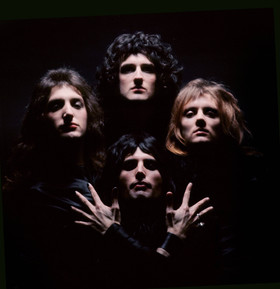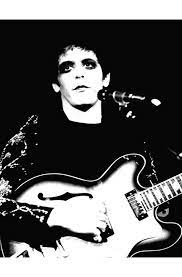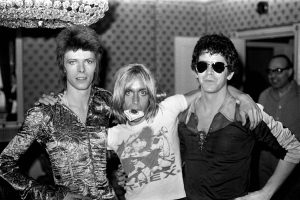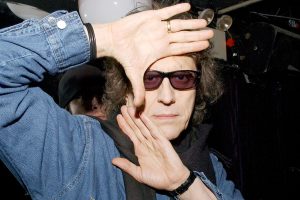HIT CHANNEL EXCLUSIVE INTERVIEW: May 2014. We had the great honour to talk with a legendary photographer: Mick Rock. He is known as “The Man Who Shot the ‘70s” and he was David Bowie’s personal photographer during his “Ziggy Stardust” era. He created iconic album covers for Syd Barrett’s “Madcap Laughs”, Queen’s “Queen II”, Lou Reed’s “Transformer” and Iggy and the Stooges’ “Raw Power”. He has also worked with Blondie, The Ramones, Talking Heads, Thin Lizzy, Lady Gaga and many others. In 2010 he released his book, “Mick Rock Exposed”. Read below the very interesting things he told us:
 How difficult was to choose your favourite photos for your book “Mick Rock Exposed”?
How difficult was to choose your favourite photos for your book “Mick Rock Exposed”?
(Laughs) I’ve done a lot of books. Yes, that one is going to be reissued in September in softback. This time with Kate Moss on the cover wearing a “Ziggy Stardust” t-shirt. So, how difficult? I suppose it took a while. I wanted to have a mixture of the old and the new. The old is easy, I mean it’s not hard, it’s easy to know what you have done with some people. But also I wanted to have some unseen stuff too. You know, I jump into. My last book was about Lou Reed’s “Transformer”. How many photos I have with Lou Reed since ‘70s? Probably about 8.000. You can imagine that it took a while. And I’m working on a new book with David Bowie and in fact today I ‘ll get them scanned about 150 previously unseen photographs with Bowie as Ziggy Stardust. I’m in some talking and discussions about a Freddie Mercury book for 2016. And maybe an Iggy Pop book too. I don’t know, I just jump in. In the case of Lou and David specifically, I’ll make my selections and then I’ll show them to them. And if they brought any objections, the things will be withdrawn. But normally they don’t. They are involved in the editing process. I only do all the selecting. But I select more than I need. For “Exposed”, I don’t know, it took a while. It’s hard to explain it. But I have done a lot of books: I’ve done a book with Lou, I’ve done a book with Syd Barrett, I’ve done a previous one with Iggy, I’ve done a glam book, I’ve done a Rocky Horror book, I’ve done a Kabuki theatre book. I don’t know how, I just jump in and keep shifting things around. But I make all the selection, nobody else does.
What are your projects for the near future?
Besides all the exhibitions, the next book to be released will be the softback version of “Exposed”, which will be released this September. I’ll send you the cover, if you remind me. And we are going to re-release my limited edition book for Lou Reed’s “Transformer”. Unfortunately he died before signing all of the books. So, what we are going to do now is: We’ll have my signature in, we’ll have Lou’s stamped signature but each book will also have three other signatures in it. And you won’t know when you’ll buy the book whose signature you got. You may get Laurie Anderson, Iggy Pop, David Bowie, Debbie Harry, Patti Smith, Jimmy Page, Bono, John Cale, Eddie Vedder and Pete Townshend. We are just getting into that, now. Next spring will be the release of my book with David Bowie for Taschen. That’s gonna be another co-signed limited edition for the ones who would like to read my book.
Was Syd Barrett an easy-going person to work with?
For me it was, yes. There aren’t many pictures of Syd in existence. Obviously, there are some pictures of him with Pink Floyd. There aren’t many photographers who took photos of Syd post-Pink Floyd. I have the biggest collection. Syd was my friend. Two weeks before the “Madcap Laughs” sessions, we took an acid trip. Most people say: “Wow, that must have been a bit crazy”, but Syd and I, we got on well for whatever reason. We always had a good time. He was an interesting character of course.
 Was Syd happy after his departure from Pink Floyd?
Was Syd happy after his departure from Pink Floyd?
I think he did his last very big interview with me in 1971. And you can see from that, that he has mixed feelings because still wanted to play, but what he didn’t want, was to go out and play the same songs every night. He got fed up with the band. He was a pure artist. And of course he was a visual artist. Before he picked up the guitar, he was a painter, he went to an art college and he continued, after he really retired from the public forum. He continued to paint for the rest of his life. There is a book out there too. Interestingly enough, when he had done a painting, he would photograph it and then destroyed the painting. Of course, it’s an interesting approach. But with visual artists you never know. He was a pure artist. One of the purest artists you can imagine. I can probably compare him only with Lou Reed, who had a so much longer career and he never compromised. Besides Syd and Lou, everybody else cares about the money. Of course, you couldn’t make Lou do things just for the money. Not that he didn’t like the money, but he wouldn’t do it if he wouldn’t want to do it. He was offered a lot of things. Tommy Hilfiger apparently offered him a line of clothing but he turned down. I don’t know, I still find it difficult. I just prepare myself by doing a lot of yoga, I meditate, I do power breathing, I just want to have a cup of coffee. Of course, many years ago wouldn’t be just a coffee (laughs). But that’s another thing. I didn’t like to continue all that. I had to stop all that, including the cigarette. I haven’t smoked a cigarette for a few years. Occasionally, I have a puff of… you know. And that’s it. I like to have a cup of coffee. But I’m addicted to yoga, to massage and all those things. I get my fix doing what I’m doing.
When you worked with David Bowie during his “Ziggy Stardust” period had you realized that both of you were writing history?
You can remember how young we were. I felt that what he was doing was important. And then he obviously felt what I was doing was important. But only time can prove that we were right. So, you know the enthusiasm of young men. One believes a lot of things. But I did believe, I truly believed it because when I first started photographing him, there was nobody else photographing him, other than me. Within a few months, yes. After the release of “Ziggy Stardust”, things began to change. “Ziggy Stardust” was released in ’72, by ’73 every photographer in the world wanted to photograph David Bowie. In the beginning, when I first met him in the early 1972, there wasn’t any money in it. In those days the beautiful thing about living in cities like London and New York, was that you could live very cheap. The general living was cheap, not like nowadays where younger photographers live in New York and London. I think this also happens to other cities like Paris. It’s very hard now. It has to do with the real estate. Like East Berlin, where 20 years ago there were a lot of artists, especially visual artists. Because you could live in a squat. I haven’t been there for about three or four years. I kept going there for several years. There was cheap real estate.
David Bowie was a huge Syd Barrett fan. Did your previous work Syd Barrett help your relationship with David Bowie?
Well, I think to some degree it did. He wanted to talk about Syd. In fact, when I did a beautiful limited edition book for “Psychedelic Renegades” (2001), Syd co-signed 320 of them. And David was very-very keen to get a copy of it. Yes, but he had met Iggy and Lou Reed who of course were not big stars either. They were underground artists. He met them in the autumn of 1972 in New York when he went to sign his deal with RCA Records for “Hunky Dory” and in those days of post-hippie underground stuff, I was very interested in photographing them too. So, between Iggy, Lou and Syd Barrettt, we had a lot to talk about. Of course, later in 1972, David introduced me to Lou and Iggy and I did the “Transformer” and “Raw Power” covers. To answer your question, I think David and I, we would have developed a relationship anyway, but there was a good talking for it, yes.
 Do you think that Mick Ronson (David Bowie & The Spiders from Mars guitarist) should have received more recognition from press and listeners?
Do you think that Mick Ronson (David Bowie & The Spiders from Mars guitarist) should have received more recognition from press and listeners?
I think clearly, yes. I think there is no doubt that he should have received it. I still know his wife and daughter to this day: Suzi and Lisa. He was not particularly motivated by money or fame. He just liked to play his guitar. He was an incredible arranger too and of course he did co-produce “Transformer”, which most people seem to forget. He did a lot of the arrangements too and he was very involved with the arrangements for David. Yes, I think Mick is very underestimated and of course my photos of him and David together –I mean David was an incredible subject anyway- but the two of them together, there was a feast.
Do you mean in the train or on stage?
Especially on stage, they were very impressive. Oh, you are talking about the shot of two of them having lunch together. There are both dressed up to the nines, and there’s a very ordinary British Rail lunch, with potatoes and beef and lamb chops. I mean on stage there was never a pair like that. I know there are Mick and Keith, Steven Tyler and Joe Perry, all those combinations. They looked so fantastic and of course their interchange wasn’t just coming up to their mind. They did all those things, they did all those theatrical gestures. Yes, for me those two together were the finest rock ’n’ roll duet.
Would you like to work again with David Bowie?
Well, I’m working with him. We are working together on merchandising. I have worked with David a lot but he isn’t doing any photo sessions for several years. I did a great session with him about 10-11 years ago. In fact, the shot of the original version of “Exposed” was taken then. Yes, of course David Bowie and Debbie Harry are probably the best subjects I have ever shot. They are very photogenic in general.
 What is the story behind the iconic image of Queen for the “Queen II” album in 1974?
What is the story behind the iconic image of Queen for the “Queen II” album in 1974?
They had approached me when I came back from shooting David in France recording “Pin Ups”. I came back and I met David’s producer and engineer, Ken Scott. He was on the roster of trying studios since David was in France recording “Pin Ups”. He had already recorded “Ziggy Stardust” and “Hunky Dory” at Trident Studios and Ken was part of their production company, Trident Audio Company when Queen recorded their first couple of albums. Queen had made “Queen” and had signed a deal with EMI. Anyway, I met Queen and they played me “Queen II” and I told them that it sounded like “Led Zeppelin meets Ziggy Stardust” and I think it’s a comment that the band really liked to hear. First they wanted me to do a publicity session for their first album, because it hadn’t sold that much. So, I did a very glammy session, they wanted to be glammy. And then they wanted an album cover. But somehow they had confidence to sway EMI Records to spend their money because they hadn’t sold any records when I shot “Queen II”. And I came across a photograph of an actress called Marlene Dietrich on the set of “Shanghai Express”, with her arms crossed, fingers spread. I am very often inspired by other photographs. I pretty loved that shot of Marlene Dietrich and we were discussing it with the band. They said “Ok” but also they wanted to shoot a white shot which of course we did. For a while, they wanted the white shot to be the album cover. Although, certainly Freddie and I, wanted the one that became the cover. What I realised at the time, was that Freddie was the visual director of the band. When he wanted something he insisted to have his opinion accepted by the three other members. After he had designed the logo, the Queen crest and he had also attended art collage. He was the only one in the band with a visual education. He insisted in the photo that became the cover. So, they reused that photo a couple of years later for the video of “Bohemian Rhapsody”. Of course later I did the “Sheer Heart Attack” as well, which is a completely different approach.
Have you overcome the death of your good friend, Lou Reed?
Lou is in my life for so long. We spent a lot of time together in the ‘70s and we became friends. Lou always has been in my thought. Obviously I know Laurie Anderson, his wife and we talk about him occasionally. I knew that he was sick. He was convinced that his death was near. He did his last public appearance for our book. He came to London, even though he was very sick, you could see how weak he was. He insisted on coming and you can see that appearance on Youtube. Of course, I saw him in New York when it was his very last public appearance, which was on my friend’s John Varvatos’ store on the Bowery. That was the last time he appeared in public. About a week later he went back to the Cleveland Clinic which was the hospital where he treated for a liver transplant. I think he stayed there for about 10 days and I spoke to him about a couple of times briefly and he didn’t really talked about dying, although he obviously knew that he was dying. He was more subdued because he was a Buddhist. There was no burial ritual. I always miss Lou. He was always part of me. I studied Modern Languages and Literature at Cambridge University, to me Lou is like Baudelaire, the great French poet. He was a pure artist. He seemed difficult to journalists and he had the public image of not being very friendly. But if you were friends, he was a true friend. One of the sweetest persons I ‘ve ever known. I know people find hard to believe that he was fine, but it’s true.
 Do you consider the album cover photo for Lou Reed’s “Transformer” as one of the highlights of your career?
Do you consider the album cover photo for Lou Reed’s “Transformer” as one of the highlights of your career?
(Laughs) I always regard the last photo session I did as one of the highlights of my career. Obviously, it turned out to be significant. I never think like that. I mean, I do what I do. If people like my work, that’s terrific. I’m always involved in a lot of projects, but I don’t feel any emotional attachment to the past. I don’t have time. Of course, I deal with the past over time, but I try to keep an objective view of it. My attachments are personal. What people thought bad and what people thought significant that’s in the eye of the beholder. I can’t put any judgment if someone thinks that something is one of the highlights of my career. That’s fine for me (laughs). I think my Black Lips album cover I did recently (ed: “Underneath the Rainbow”) is. It’s just released and they are an American band, a great band. Anyway, some people think it’s the “Raw Power” or the “Queen II” cover or The Ramones’ “End of the Century” or Joan Jett. I’ve done so many album covers and so many re-releases and packaging. I forget about many of them, until someone presents them to me.
Was Iggy Pop an extreme person in his everyday life just like he was on stage?
Well, he could be. He wasn’t all of the time back in those days! Certainly nowadays -I shot him about 3 or 4 years ago- he was very different on stage. He wants to live. He can’t carry on like he used to. But this applies to all of us. Unfortunately, the age, when you are older you can’t do all the things you did when you were young. But I’m in a good shape. I do yoga every day, I’m very focused and I work a lot. I can’t go without sleep for weeks for instance and consume large amounts of cannabis for all of us (laughs). If I try that now, I’m sure I would kill myself. I like to sleep every night now, whether it’s 5 or 6 hours or whatever. I’m gonna get some sleep every night. Especially when I was hanging out with Lou Reed. He used to think sleep is a waste of time. But we couldn’t sleep because we had too many things to do. I remember staying awake for a week working on a project for “Rock and Roll Heart”. A big TV project. He did it. It’s probably the first ever video production. I don’t know if people fully recognize that.
 When you work with newer artists like Lady Gaga do you feel the excitement you felt when you worked with David Bowie, Lou Reed and Iggy Pop?
When you work with newer artists like Lady Gaga do you feel the excitement you felt when you worked with David Bowie, Lou Reed and Iggy Pop?
I always get excited when I shoot. It’s the process of shooting that makes me excited. I have a different perspective I suppose, because I was very young then, I’m not young now. It’s a valid question, but I like to shoot. That’s the true for that. Especially situations that I have the full control whether they are locations or in the studio. Everywhere in the world, it’s a good place. I think the performers today –to a certain degree- are more like commodities if you like that. Brands. Back in those days, nobody thought like that. The idea of someone being brand and immediately spinning off their fame from music into merchandise, which seems to happen all the time. Of course, there are more media today.
You took some photos of Andy Warhol along with Lou Reed and Mick Jagger. Were you impressed by Andy Warhol’s personality?
He was a strange character. I did a great shoot of him dressed as Santa Claus with his friend Truman Capote. I knew Andy but I didn’t really know him. He was a strangely understated personality. He could answer the questions with one word. You asked him a question and he would say “yes”. You asked him another question and he would say “no”. And when he answered like that, you couldn’t get to know him. He was an interesting character, that’s for sure. Of course, he turned out to be probably the most significant of all the modern artists. Although his approach had a certain simplicity. It’s insane how valuable are some small things he did in the late ‘60s and the early ‘70s. They cost $100.000 or $200.000. He became millionaire by just hanging on to these pieces of art. It’s certainly fascinating.
 Was there any competition among photographers in the 70s?
Was there any competition among photographers in the 70s?
I don’t think people thought like that in those days. I mean, Bob Gruen is a friend of mine although I didn’t get to know him until the late ‘70s. There was a guy called Barrie Wentzell who worked for the Melody Maker. I was too young and I didn’t have time to think about that. I was working too much anyway. I don’t know. I can see what you mean.
Bob told me that he doesn’t do live photographs because there are too many photographers.
There is a point! Anybody gets up onstage. Anybody, doesn’t matter who they are. Whether they are known, unknown, they get loads of cameras and of course they get their iPhones and whatever. A lot of my famous shots, when I shot “Transformer”, that’s from a performing show. And “Raw Power”. I was the only photographer there. It wasn’t like today where there are hundreds of photographers. It’s different time and there weren’t many outlets for the photographs. Whether nowadays there is nothing else, you stick them on the Internet. I have so many photographs that nobody saw them for many-many years. But nowadays, people want to know more. I still discover the stuff I did in the ‘70s. It’s a different world today.
Have you ever turned down an interesting professional offer because you were busy or for any other reason?
I do remember that RCA Records –because Bowie and Lou were signed to RCA Records- wanted to send me into an Elvis Presley concert to take some photographs. For whatever reason they wanted me to get around Colonel Parker (ed: Elvis’ manager) who wasn’t allowing the photographs. Anyway we had all set up and around three days beforehand he died. So, I never got to take those pictures. So, I remember that. I don’t remember anything else like that.
 Do you feel lucky that you have met all these great people?
Do you feel lucky that you have met all these great people?
For a man still around at my age, with a lot of them I became friends. When I first met all of them, were not very known: David, Lou, Iggy, Queen, Bryan Ferry, Roxy Music. With so many of these characters. Even the Sex Pistols when I first shot them. It was that time I was in and out New York when I shot Blondie, The Dead Boys and Patti Smith. They were a little bit known then. Everything goes in such a fast pace today. I like it but it’s different. Certainly, it’s different. I shot what I shot back then and of course they have a huge value today. It’s interesting that I remember I got paid £100 for the “Transformer” cover. All the Iggy Pop covers, all the 6.000 pictures of Ziggy Stardust, all my Debbie Harry pictures apparently cost a lot of money. People ask to buy them and they offer me a lot of money but I don’t really want to sell out. I’m doing other things. I enjoy. I’m really having fun.
Who is the coolest person in rock ’n’ roll business?
There are moments. People ask me: “Who would you like to photograph today?” I would like to photograph Alfred Wertheimer, who is now in his 80s. Who shot all those early photographs of Elvis Presley before Elvis became really big and he was given the access and once Elvis became a big star, he didn’t become a photographer in order to stay active. Or maybe Bob Dylan around the time of “Like A Rolling Stone” and “Blonde on Blonde” where he had the crazy hair and the shape with the fine trousers and the boots. And Keith Richards around 1969, around the time at Altamont. Nobody looked cooler than Keith in that period of time. Who is the coolest person in rock ’n’ roll? Really? David Bowie I think today. He does no interviews, he does no photos and his star is bigger than ever. And he doesn’t play his music in public. I think he’s pretty cool. How many artists today can do that?
Do you have any professional ambition left?
I want to keep shooting into my 90s. That’s my professional ambition. And now I’m in my 60s and I love to keep shooting for another 30 years. That’s my biggest ambition.
Photos by Mick Rock.
A huge “THANK YOU” to Mr Mick Rock for his time and to Pati for her valuable help.
Mick Rock Official website: http://www.mickrock.com
Buy Mick Rock’s book “Mick Rock Exposed” here: http://www.amazon.com/Mick-Rock-Exposed-Faces-Roll/dp/B00A1845V6

